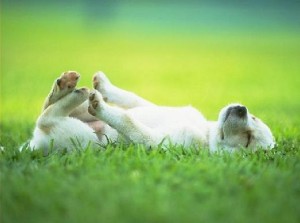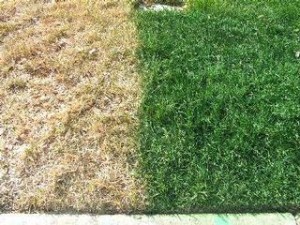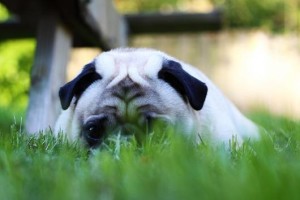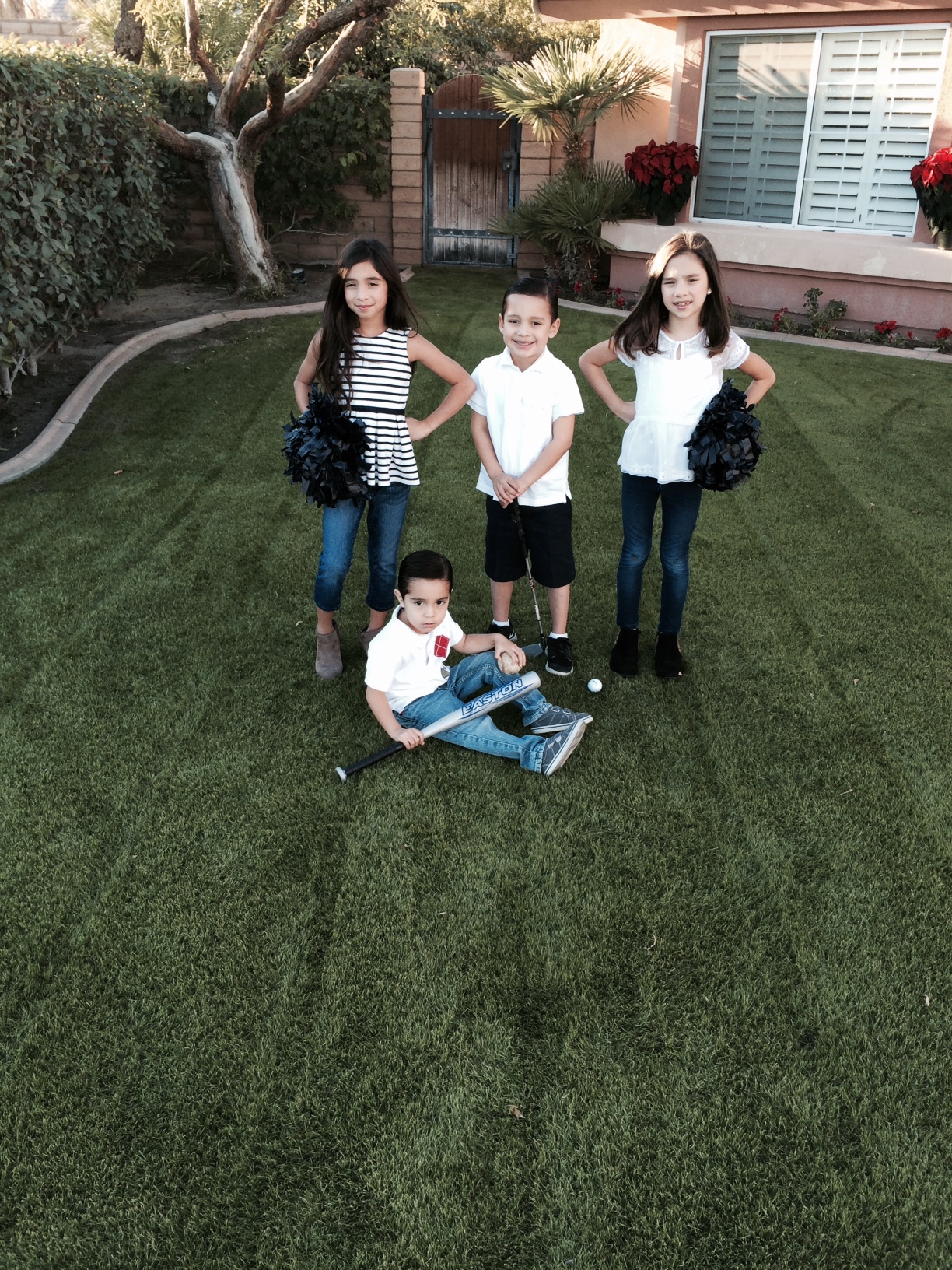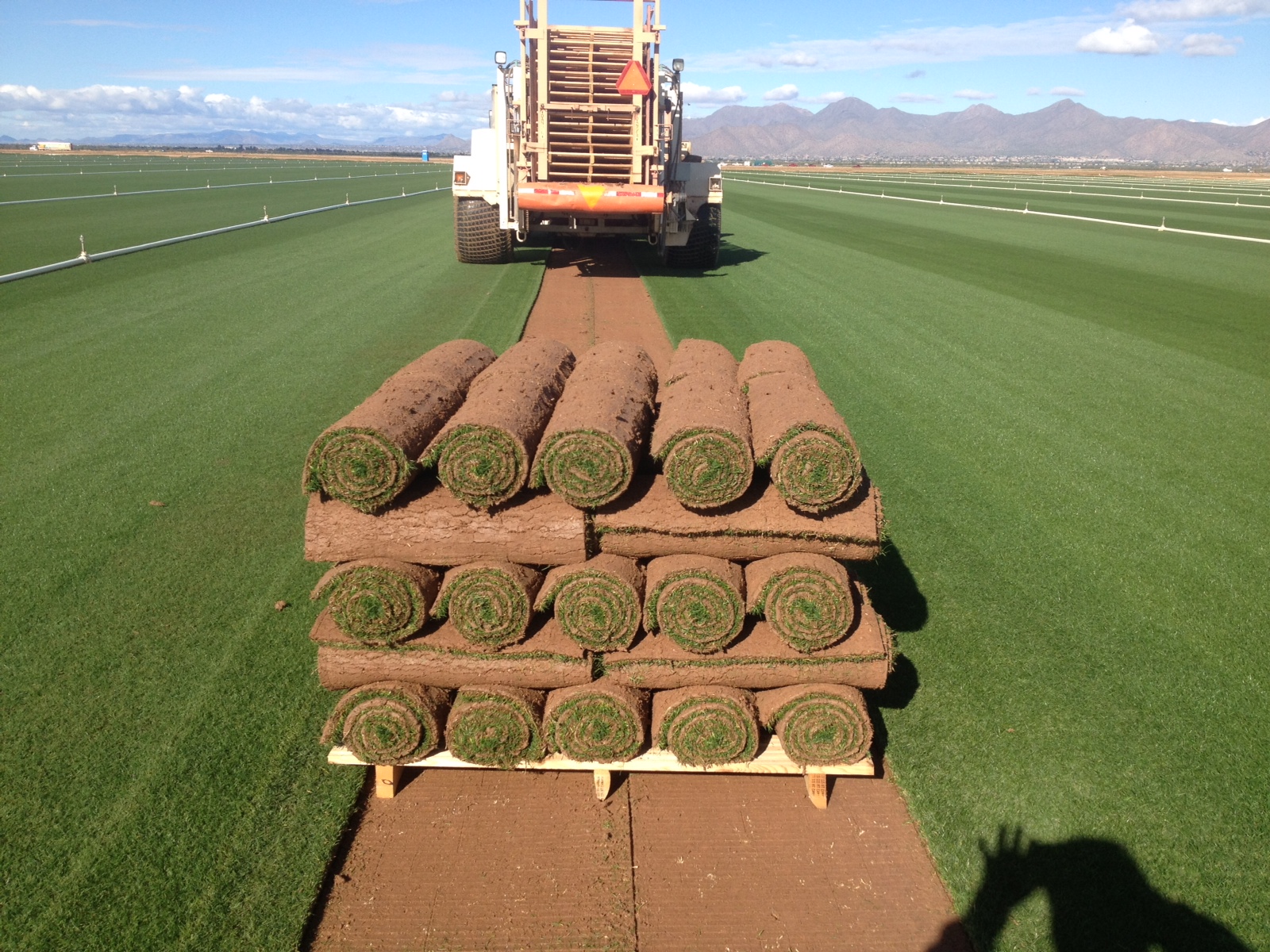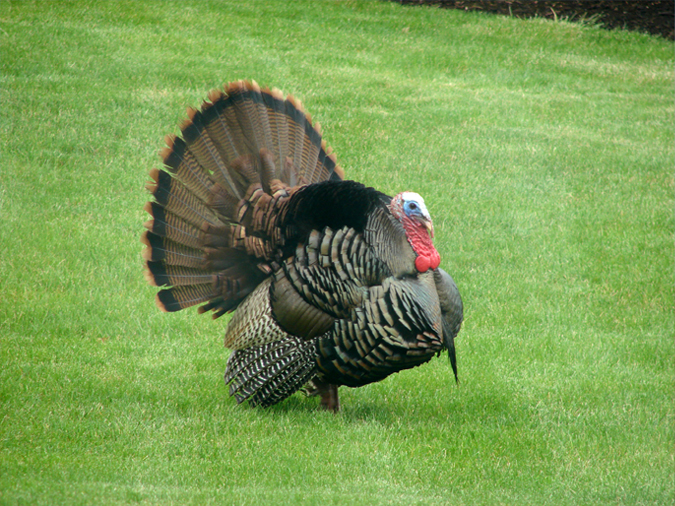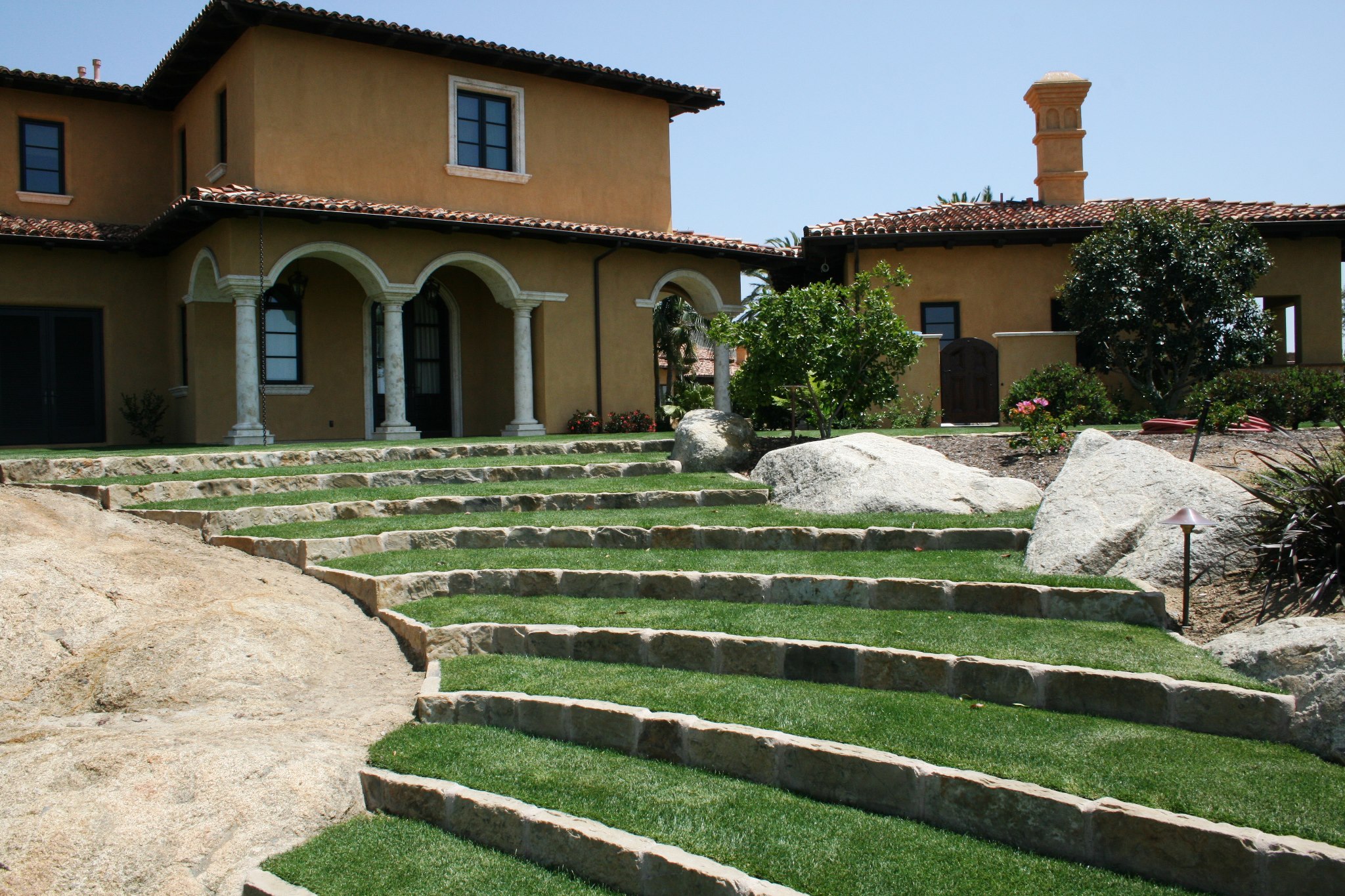Aug
Preparing Your Lawn for Fall Transition
We’re halfway through August and the temperatures are still soaring well into the hundreds. As I sit here ordering my ryegrass seed for the farms I figured it was a good time to put out a short blog on preparing your lawn for the fall.
The hot/humid weather is ideal for warm season grasses, especially with sod in Arizona and California. If you had any weak areas in your lawn you saw one of two things happen over the last couple weeks. You either saw the weak areas begin to grow in size or you saw your problem areas fill in as the stolons moved across the open ground.
If your weak areas are getting larger you should take a close look at your irrigation system. Sometimes it appears sprinklers are getting great coverage but when you put out bowls to check for water volume you often find that area is being missed. One of the most common areas for this is right in front of your pop up sprinklers. That triangular spot right below the sprinkler is the hardest spot to cover on the whole lawn. The easiest way to fix this issue is to put in a dual spray nozzle. These cost around $3-$4 and can be installed in under a minute. Read the rest of this entry »
Comments Off on Preparing Your Lawn for Fall TransitionApr
April Lawn Transition Tips
For most parts of the country spring means a return to warmer temperatures and usually some good rain storms. For the desert southwest this typically means hot temperatures and the occasional rain event. We were lucky enough to get some late season El Niño storms this month which will have a nice impact on our warm season grasses.
The transition season has officially begun and over the next month you will start to see your underlying warm season grass start to push out the winter ryegrass. The hot temperatures will start to take their toll on the ryegrass and it will start to die out. It’s not uncommon to start to see dry patches emerge in your lawn that looked perfect the week prior.
As much as it may pain you to see sections of your beautiful lawn start to die back remember this is a good thing. Sections of your lawn will always dry out before others areas simply because of the soil texture, compaction, or sprinkler coverage. It’s important to rule out sprinkler issues and if it is merely a transition dry spot rest easy. For these spots I recommend taking a hard toothed rake and rake up the dead ryegrass that lies on the surface. This dead material is shading out the bermudagrass down below and preventing it from getting water and sunlight. Keeping your lawn mowed below ¾” during this time of the year and power raking or verticutting will also help remove dead material from shading your summer grass.
Comments Off on April Lawn Transition TipsJan
El Nino, Drought, and Your Lawn
We have been hearing about El Nino for some time now and it’s finally upon us. To most of us it spells relief that the drought may finally come to an end. We have been battling one of the worst droughts in history the last few years, and snow and rain will allow many to breathe a sigh of relief. By no means are we out of the woods yet as a few days of snow and rain won’t take care of the problem. It appears the weather models will be correct for this spring. It’s going to be wet spring which will bring back a lot of landscape areas that were put into seasonal dormancy to save water.
As I drove into work this morning I saw two common areas that had their sprinklers running while it was raining. It has been raining for the last four days and it doesn’t appear to be letting up until the weekend. While none of us want to interfere, it is important to let your homeowners association or city know that water is still running in these areas. There is only so much water we can save at our residences, but there are others areas we can step in. Most parks have the irrigation clocks set to run daily, and there is not enough man power to check the areas daily or even weekly. One way to fix this problem is the addition of rain sensors or gauges that attach to the irrigation clock to shut off the sprinklers. I know we can’t go back and fix all the parks that were put in past years, but we can make sure that all new areas are doing everything they can to save water. The majority of people are extremely responsible users of water and we need to encourage others to also use water wisely. Read the rest of this entry »
Comments Off on El Nino, Drought, and Your LawnNov
Tips On Maintaining Your Non-Overseeded Lawn This Winter
As we move through the fall season many of you will choose the option to forgo overseeding this season to save some water. With the prime growing season behind us you’re going to start to see your lawn start to slow down. The days are becoming shorter and your warm season grass is starting to need less inputs. There are a couple areas where you can cut back this winter to save yourself money. I will go into detail what you need to maintain a non-overseeded lawn during the winter, and go briefly over an overseeded lawn watering and fertilizer schedule.
My first suggestion for those that will not be overseeding is to turn your irrigation clock off except on the day you will be watering. Having your lawn set up to automatically run certain days and times during the fall/winter will cause you to use much more water than your lawn can utilize.
Comments Off on Tips On Maintaining Your Non-Overseeded Lawn This WinterSep
Fall Overseeding and Your Lawn
The days are getting shorter and the heat is starting to die down a little as we enter the fall season. With fall comes the onset of overseeding in many parts of the country and the West Coast is no different. For those new to overseeding let me give you a brief definition. Overseeding is simply the process of seeding a cool season grass into your warm season turfgrass in order to maintain winter color. This is not a mandatory process if you have grass, but it is one of the options that are out there for homeowners and professionals.
There are a few options during the fall months to take care of your lawn, and without question the most popular is to overseed. Outside of overseeding you have the option of using turf colorant such as Endurant to give your dormant grass a nice green appearance. Or you can just let your lawn go dormant for the winter months (brown can be the new green!). There is no right or wrong approach, so decide what you would like to do as the temperatures begin to drop over the coming weeks.
If you will be letting your lawn go dormant it will stay fairly green until the first hard frost which is around Thanksgiving and will start to green up in late March. If you have a paspalum lawn you can usually get through the month of December with a green lawn and it will start greening up in early March.
Comments Off on Fall Overseeding and Your LawnAug
The Drought and Your Grass. How to Have a Lawn and Benefit the Environment.
Let’s face it–there is little one can do to escape the oppressive August heat in Arizona and California. But, did you know your property with grass is a good 30 degrees cooler than your neighbors’ with rocks, and 50 degrees cooler than the ones with artificial turf? Natural turfgrass has some major benefits!
I thought I would start off today’s blog by giving you some light at the end of the dark tunnel we call “summer.” While we started the summer off with mild temperatures, they have quickly soared making it one of the hottest summers on record. In order to combat the temperatures most people try to stay inside or crank up their air conditioners, but what we should be doing is looking for ways to control the ambient temperature at our properties. Installing grass is one of the best ways for lowering the temperature around your house, and allowing you to stay cool when you’re out enjoying a beverage by the pool.
I know a lot of people are reading that first paragraph and saying we’re experiencing a historic drought–how can we put in a new lawn? Yes, we are experiencing a drought, but the media would have you believe all the water being used is by lawns and golf courses. How about hotels, pools, washing cars, long showers, fountains, air conditioners, increase in electricity usage, washing dishes, and on and on? It’s easy to blame turfgrass for using too much water, but we need to look ourselves in the mirror each day and realize all need to act responsibly during this drought. Some see grass as a luxury, and golf as a silly game that is using our water supply. What they don’t see are the positive effects turfgrass has on the environment.
Comments Off on The Drought and Your Grass. How to Have a Lawn and Benefit the Environment.Mar
Transitioning Your Lawn for Spring
If you have taken a look at the extended forecast you most likely saw that temperatures in the desert areas will be hitting close to 100 this weekend. No one wants to see that in late March unless you’re a sod producer or looking to get your warm season lawn to green up. While it is great for green up, it is still too early to know if this weather will stay or if we will get a minor cold snap. If we were assured that the 90’s were here to stay I would tell you to really start pushing your warm season turf, but it is best to ease into the season until soil temperatures reach 64 degrees.
Either way, transition time is upon us and it is time to start easing into the summer grass season. For people with non- overseeded turf this weather is great news for their lawn, and for others transition can bring a few headaches. I have outlined some simple steps to help you get your lawn to go from ryegrass to bermudagrass without any anxiety.
Comments Off on Transitioning Your Lawn for SpringFeb
WEEDS! Pre-Emergent Herbicides and Your Lawn
Last week it was raining and in the low 60’s and this week we will be pushing the low 80’s. Everyone knows that the rain is great for our lawns but it is also great for producing weeds.
As we move through February it is important to think about your lawn from the previous year. Did you have weed issues? Were you constantly pulling spurge out of the lawn during the summer? Even if you didn’t have a bad case of this last year you should still think about putting down a pre-emergent herbicide. The window to apply these is from now until the end of February. If you miss the window and the seedlings have already germinated you can bet you will be on your hands and knees this summer pulling weeds out of your turf.
Comments Off on WEEDS! Pre-Emergent Herbicides and Your Lawn
Nov
Thanksgiving Tips for Your Lawn
As we approach Thanksgiving it is a good time to start thinking about your winter fertilizer program. In past blogs I talked about getting down a few fertilizer applications prior to the first frost of the year. In general we will receive our first frost sometime between Thanksgiving and the first week of December. The first couple of frosts are usually pretty mild, but as we get deeper into December we will get some hard freezes which will start to affect your roots. Once we get frost all the way down to the roots it makes it tougher for the plant to take up fertilizer so foliar applications generally provide the best response.
For those unfamiliar with why plants freeze let me provide you with a simplistic definition. Water vapor condenses into liquid water and forms ice as the temperature drops at or below 32 degrees. Temperatures on the ground are typically cooler than the air just a few feet above the ground surface. On a clear, calm night with no little wind the cold air sinks to the ground level and while the thermometer may not read 32 degrees or lower, the ground temperature is below freezing. You will notice that when there is a heavy cloud cover there is typically no frost. This is because the grass does not need to emit as much radiation because the clouds reflect the radiated heat. On a cloudy day dew will form on the ground making it very unlikely that frost will form on the ground.
Comments Off on Thanksgiving Tips for Your LawnOct
Watching Your (Overseeded) Grass Grow
By now most of you are probably doing what I do all day and that is watching grass grow. If you threw down seed to overseed your warm season lawn in the last couple weeks it surely has sprouted,and should be filling in quite nicely with our weather. It always amazes me how quickly ryegrass grows at this time of the year. You can check your lawn before you leave for work in the morning, and by the time you get home it has grown a ½”. It usually takes about 7-10 days to get your lawn really going, but once it does you will start to see the grass tiller and fill in any voids in your lawn.
Comments Off on Watching Your (Overseeded) Grass Grow
